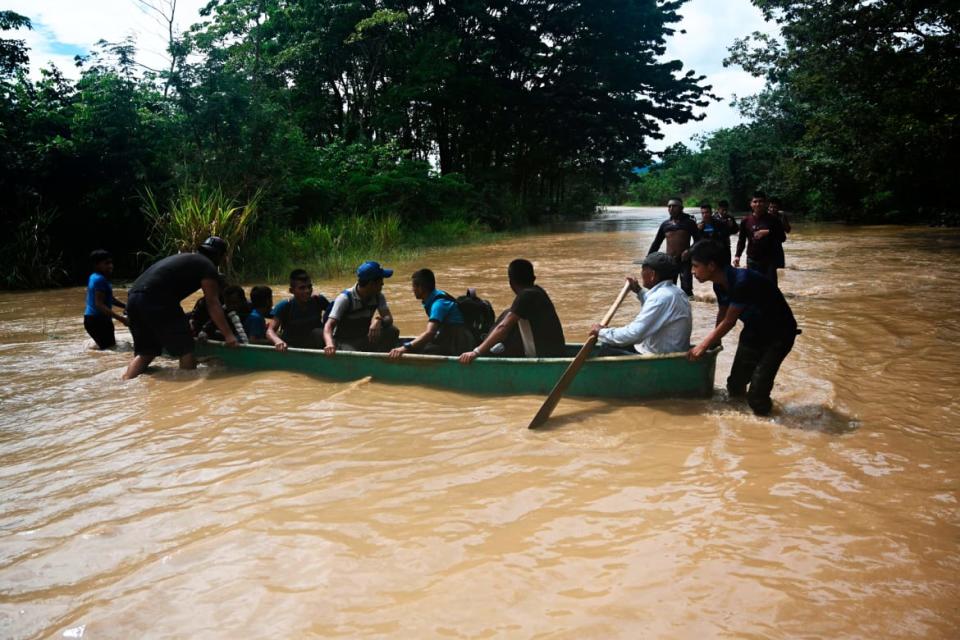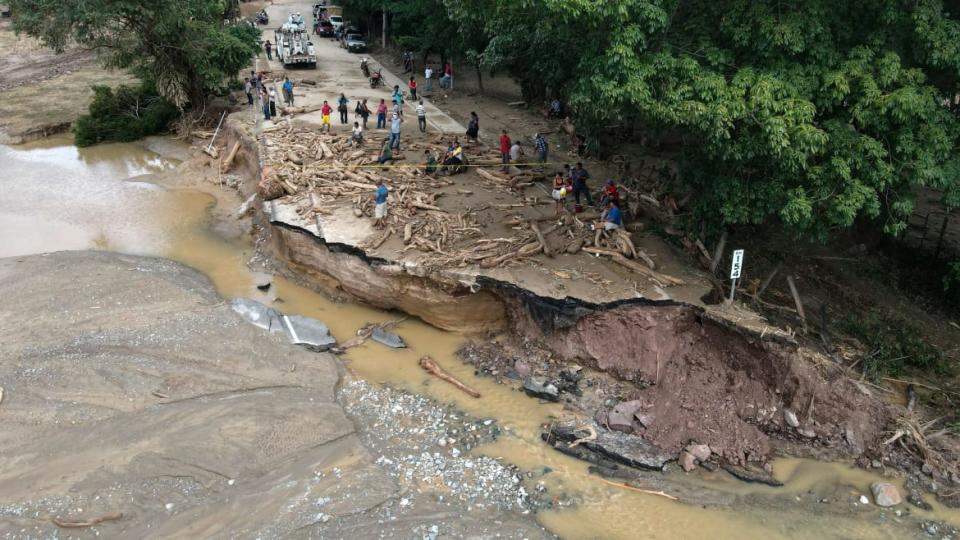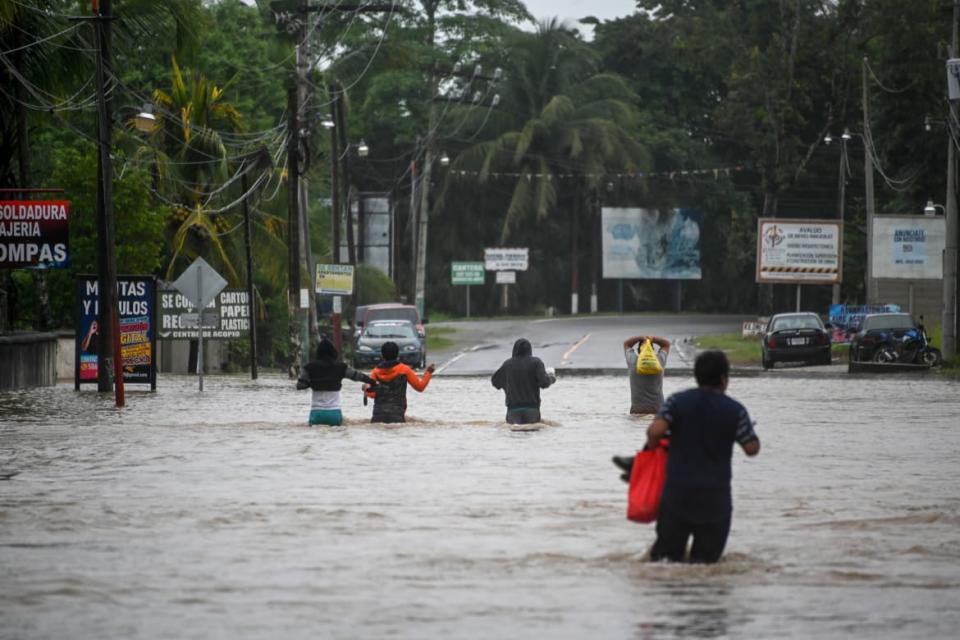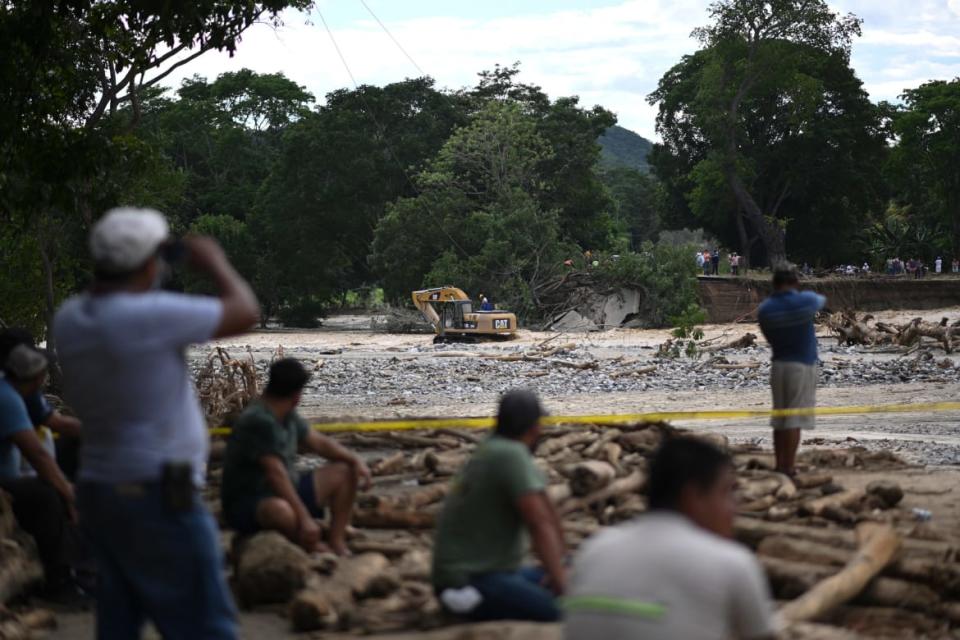Migrants Flee Climate Change Ravaged Central America as Record-Breaking Hurricanes Hit

GUATEMALA CITY—Communities across Guatemala and Central America are reeling from the impacts of two consecutive hurricanes that left towns flooded and destroyed crops across the region.
The two massive storms, Eta and Iota, hit Central America hard, displacing millions across the region and leaving hundreds of people dead. Across Guatemala, Honduras, Nicaragua, and Panama, homes have flooded, roads and bridges have washed away, and crops have been destroyed.
“It is difficult for us right now, it makes me want to cry,” said Oralia Raymundo, 34, in the Indigenous Maya Ch’orti municipality of Camotán in Guatemala.
Her family fared better than many others across the region, as their home was not damaged by the storms. But this year’s harvest was destroyed.
“We have lost all our crops,” she told The Daily Beast. “We are not going to have anything to eat.”
Over 355,000 people in Guatemala have been affected.

People had to resort to traveling by boat in a flooded area in Panzos, Alta Verapaz.
The impacts of the storms will have ramifications for years. The destruction left in the wake of the hurricanes highlight the impacts of human caused climate change, factors which are driving hundreds of thousands from Central America to seek to reach the United States.
Northern and Eastern Guatemala saw intense heavy rains from the storms causing widespread flooding and catastrophic landslides. In one disaster following Eta, a landslide in province of Alta Verapaz buried the Indigenous Maya Poqomchi’ village of Quejá, leaving over 100 under mud and debris. Rescue efforts were abandoned days after they began after conditions in the area made it unsafe for rescuers.
Many other towns and villages across Guatemala remain under water.
Rural Indigenous communities are among the hardest hit, with many communities being totally cut off from access to aid. Helicopters have become the only means of reaching areas devastated by the storms. The United States military and neighboring El Salvador sent helicopters to assist in aid distribution.

Hurricane Eta detroyed a road in Gualan, Zacapa department.
There was little warning for Indigenous communities of the storms. Following the landfall of Eta, some Indigenous communities saw little aid from the Guatemalan government. In other cases aid was tied to local political parties that went to their supporters. This continued following the heavy rains from Iota.
This reflects a long history of discrimination and abandonment of Indigenous communities in the Central American country. During the country’s 36-year-long internal armed conflict (1960-1996), the Indigenous Maya communities were targeted by the military, leading the United Nations backed truth commission to declare acts of genocide had occurred.
“There is no policy from the state or plan for communities to try to reduce the risk of disasters,” said Francisco Velasquez Marroquin, a 59-year-old Indigenous Maya Ixil who directs an organization Asociación de Asentamientos Unidos del área Ixil in Nebaj, Quiche, which sits in Guatemala’s Western Highlands.. “It worries us, in the years after the signing of the peace accords, there has been a massive migration of Ixiles to the United States, but with this situation, there is a risk that this migration will grow.”
Smashing records
The 2020 hurricane season has been among the worst in history, setting records for the number of storms and of intensity. Iota was one of the fastest intensifying storms ever recorded between forming and reaching category five.

Las Posas village 150 miles north of Guatemala City was severely flooded by Eta.
“The intensification of the characteristics we see as the globe continues to warm,” said Todd Miller, the author of Storming the Wall: Climate Change, Migration, and Homeland Security. “The climate changing has created all the conditions for these storms to intensify and carry way more of a punch when they make landfall.”
This continues the trend over the last 10 to 15 years of human caused climate change causing intense storms, with hurricanes forming faster and having longer more intense winds.
Inside the Vast, Weird World of Guerrilla Wildfire Fighters
Central America is among the regions of the world most susceptible to the impacts of human caused climate change, with Nicaragua, Honduras, and Guatemala sitting in the top ten. In spite of this, many governments do not have mitigation plans in place.
Previous natural disasters have caused massive migration to the United States, especially after Hurricane Mitch in 1998.
The first storm, Eta, made landfall in Nicaragua, just as the United States officially withdrew from the Paris Climate Accords.
Catastrophic Convergence
The region remains in a constant state of crisis, brought about by endemic corruption, environmental degradation caused by extractive industries and agribusiness, and extreme poverty. These factors, along with climate change, are pushing hundreds of thousands from Central America to migrate to the United States.
“The damages that are felt from these recent storms are worsening the situation that is felt in the country,” said Juan José Hurtado, the coordinator for the Guatemalan migrant advocacy group Pop No’j. “All this leaves bare the structural problems in Guatemala. The people that are most affected are those who are in poverty and the people most marginalized. Migration is going to increase.”
Migration is not the first decision for many, but as crises mount, it becomes the only option.
“The environmental crisis converges into the other crisis in the region,” Miller told The Daily Beast. “If you are a subsistence farmer who is dependent on harvest and if a drought hits or a storm hits, you are in a crisis. But that crisis is there because of all these other factors.”
The regions of Guatemala most heavily affected by the storm are among the poorest in the country. In Alta Verapaz, for example, which saw widespread flooding and landslides caused by both storms, 83.1 percent of the population live in poverty. This situation is similar in neighboring countries.
America Is on Fire, and It’s an Inequality Nightmare
Amidst the worsening situation in the region, migration from Guatemala and Honduras has increased dramatically in recent years. It is difficult to estimate how many people have made the journey, but the United States Customs and Border Protection agency saw an increase in apprehension of Guatemalans and Hondurans at the border in the last four years.

Excavators have begun work but the damage will cost millions of dollars to repair.
Faced with the disaster, the Guatemalan government of President Alejandro Giammattei requested Temporary Protected Status (TPS) for Guatemalans in the United States. A group of congressional Democrats proposed a bill to introduce TPS for those affected by the storms on Thursday
But any migrants displaced by these storms that seek to reach the United States continue to face an aggressively protected border blocking them from their destination.
“The United States has put way more greenhouse gas emissions into the biosphere than countries like Guatemala or Honduras,” Miller told The Daily Beast. “But the United States is militarizing and fortifying its borders against the very people who are displaced by the changing climate.”
Get our top stories in your inbox every day. Sign up now!
Daily Beast Membership: Beast Inside goes deeper on the stories that matter to you. Learn more.

